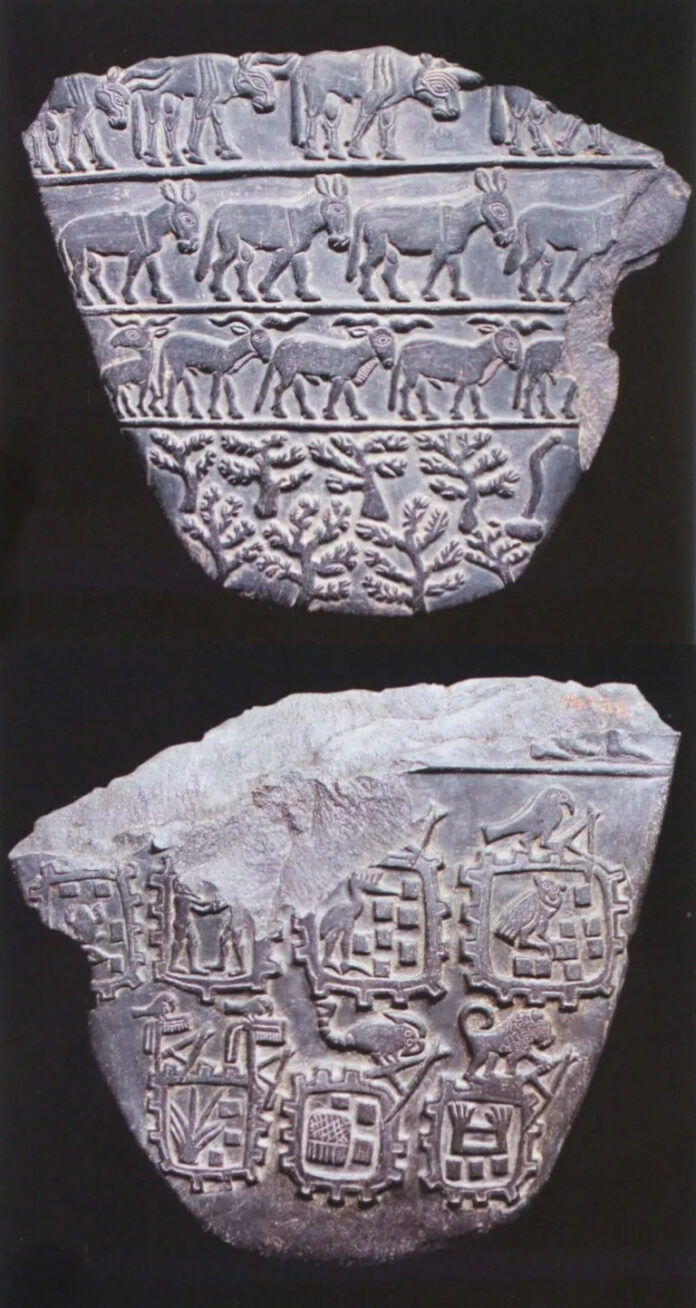Unearthing a Predynastic Treasure
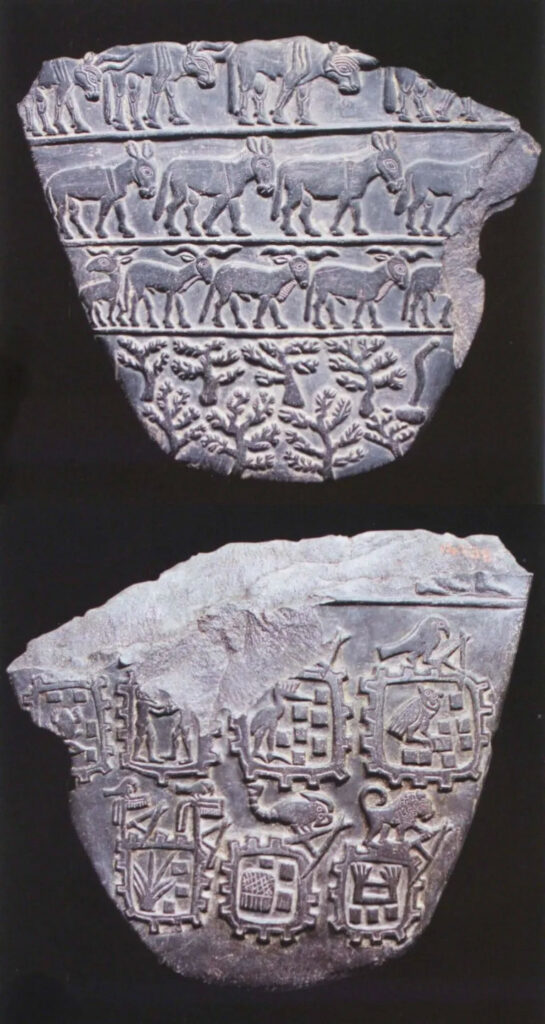
In the sands of Abydos, archaeologists uncovered a remarkable artifact that would shed light on the artistic prowess and cultural complexities of ancient Egypt. The Libyan Palette, also known as the Tehenu Palette, dates back to the Naqada III or Protodynastic Period (c. 3200-3000 BC). This fragmentary stone cosmetic palette, adorned with intricate carvings and hieroglyphic writing, offers a fascinating glimpse into a world on the cusp of dynastic rule.
A Canvas of Ancient Life
The palette’s surface tells a rich story through its detailed imagery. On one side, rows of animals parade across the stone, while below them, an orchard of olive trees flourishes. A hieroglyphic inscription reading “thnw” or “tjehenw” (tehenu) likely refers to the Western Nile Delta or, as many scholars suggest, the region later associated with Libya.
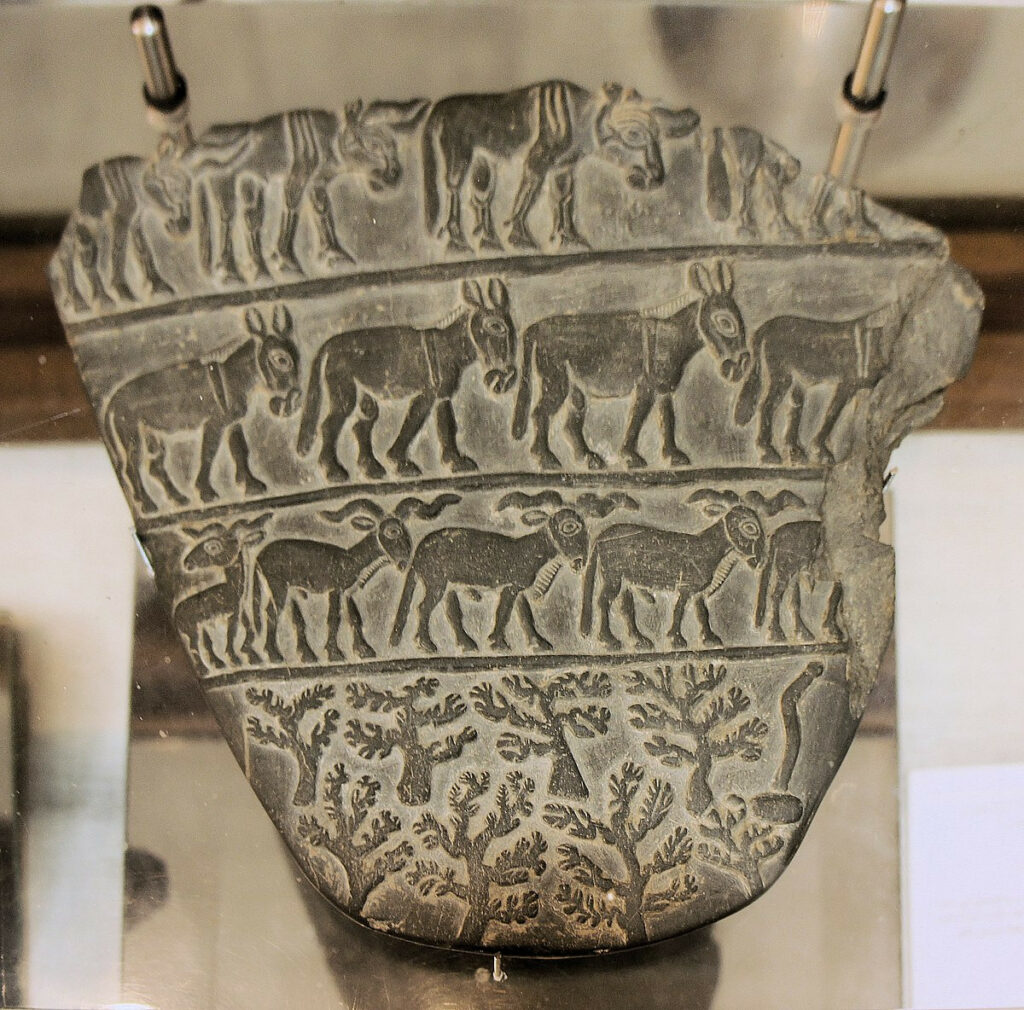
The reverse side presents an equally intriguing scene. Seven fortified structures stand in square formation, each topped by a powerful symbol—a hawk, a lioness, a scorpion—all wielding hoes in a ritual foundation ceremony. These images speak to the importance of kingship and divine power in early Egyptian society.
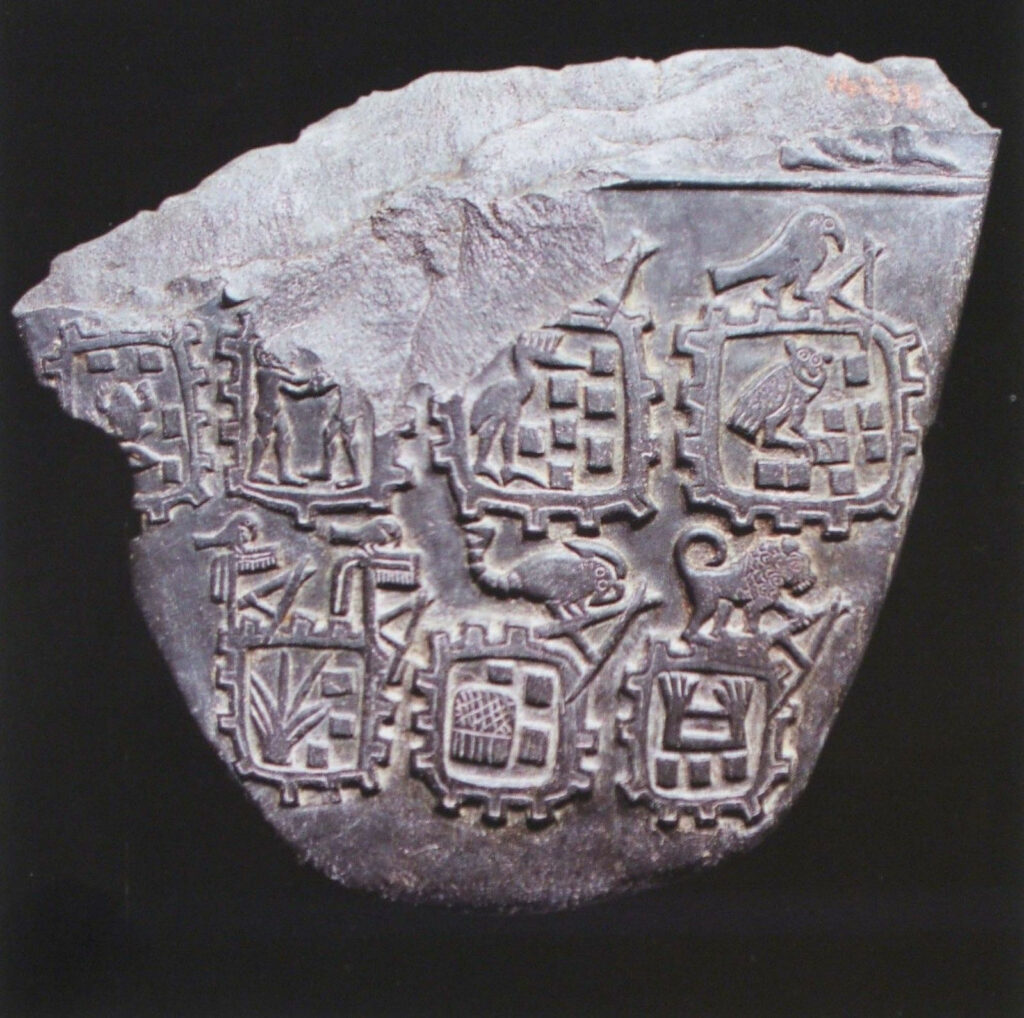
More Than Just a Pretty Face
The Art of Ancient Cosmetics
The Libyan Palette wasn’t merely decorative; it served a practical purpose in the daily lives of ancient Egyptians. Like other cosmetic palettes of its time, it was likely used for grinding and mixing pigments or cosmetics. These flat, often stone-made palettes featured a central depression where materials could be processed using a pestle or spatula.
A Cultural Treasure
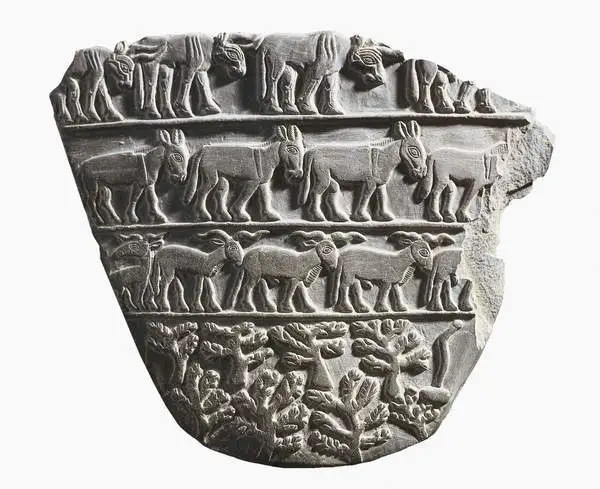
Beyond its utilitarian function, the Libyan Palette holds immense cultural and symbolic value. The intricate designs adorning its surface reflect the artistic styles and beliefs of the Predynastic period. Such palettes were highly prized possessions, often accompanying their owners into the afterlife as cherished grave goods.
A Legacy Preserved

Today, this remarkable artifact resides in the Egyptian Museum in Cairo (inventory number JE 27434). Measuring 19 x 22 cm and crafted from schist, the Libyan Palette continues to captivate researchers and history enthusiasts alike. It stands as a testament to the skill of ancient Egyptian artisans and provides invaluable insights into the cultural landscape that gave rise to one of the world’s most enduring civilizations.
